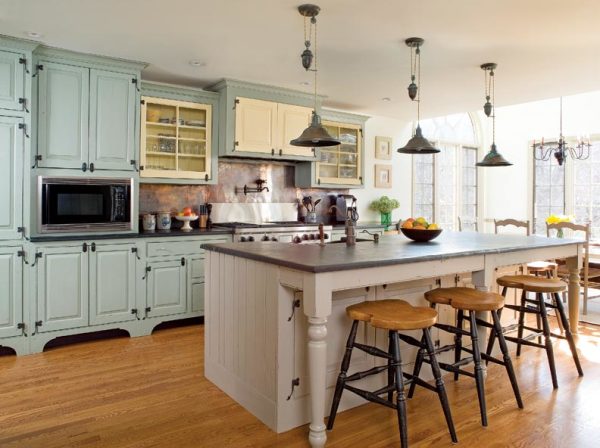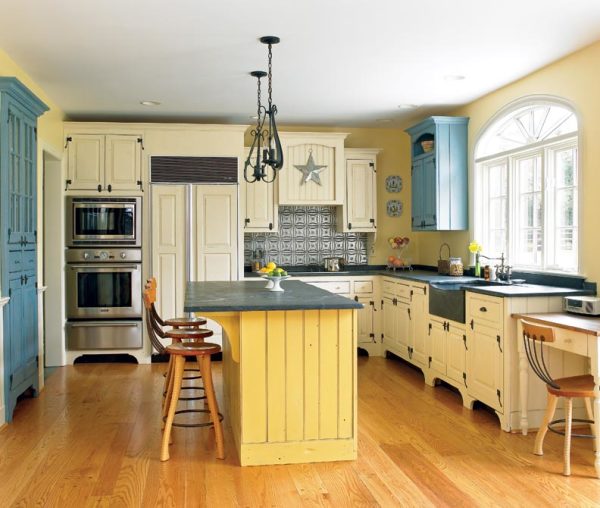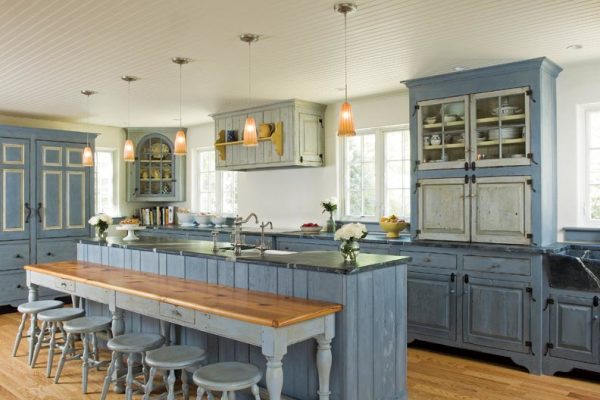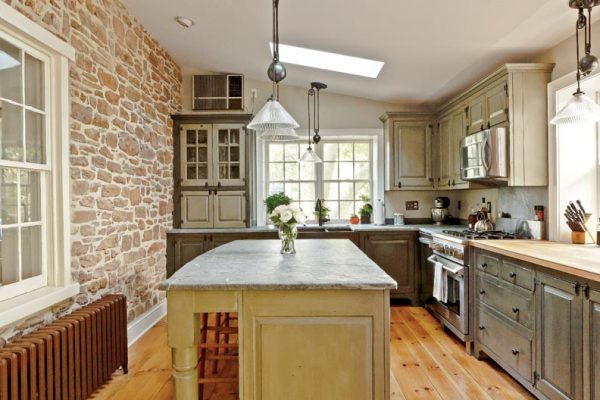
Keven Ritter’s designs emulate the colonial era while offering all the storage needs of today. (Photo: Gridley + Graves)
“I learned most of my skills from my dad,” explains Kevin Ritter, founder and owner of Timeless Kitchen Design in Malvern, Pennsylvania. “He taught me all I know about woodworking.” Odds are that’s probably quite a bit of knowledge passed on from a man who has made furniture for more than 30 years. Yet it was only after five years of apprenticeship with his father, Bryce, that Kevin first thought about evolving the fine carpentry skills required for furniture construction into high-end cabinetry.
“The idea behind my company was to adapt furniture into cabinetmaking, thus creating stand-alone pieces that were both aesthetic and functional in today’s modern kitchens,” he says. Today, his small two-man shop has been designing and building period-inspired cabinetry that is indistinguishable from authentic antique pieces.
Box Scores
While growing up, Kevin remembers a broad array of antique cupboards and cabinets utilized throughout his parents’ kitchen, where one piece often served many purposes. It is this same mantra that Kevin carries into his own design philosophy. “We really try to create eclectic cabinets that appear to come from multiple sources,” he explains. “Although the cabinet frame—or carcass—is modern and functional, we can vary the design by period, wood species, and finish.”

To conceal the stainless refrigerator, Ritter designed panels to match the other cabinetry he created for this new old kitchen. A tin backsplash enhances the authentic feel. (Photo: Gridley + Graves)
And vary he does. The company’s website contains styles including French Country, Simple Country, Swedish Inspired, European Mix, and Eclectic Vintage. Each design is distressed for patina, optionally fitted with hand-forged iron handles and/or hinges, and often painted with various shades of milk paint—a component of an early traditional kitchen and widely used on furniture and woodwork during colonial America.
“We seldom leave wood natural or stained because it wasn’t a traditional finish for early style furniture or cabinets,” explains Kevin. “We do, however, sometimes allow a few pieces left unfinished,” he continues, “but only for accent.” These few accent pieces are often provided by Bryce, who designs and then builds unfinished furniture to complement the milk-painted cabinets. “By overlapping on certain projects, we can enjoy working together while operating as two completely separate companies,” says Kevin. “This allows us to benefit each other while growing in new and different directions.”
The direction Kevin continues to forge is one of authenticity that walks the line between modern function and the aesthetic appeal of past eras. “Basically, we build cabinets that are bulky, furniture-based, utilitarian pieces,” he explains. “By refining certain characteristics, we ultimately create hybrid cabinets that are both functional and aesthetic.”
Yet it’s not just through cabinet design that Kevin excels, but also overall kitchen design. “A basic principle of good kitchen design is to incorporate efficiency in any kitchen floor plan, which is traditionally accomplished through inclusion of large openings,” he says. “Therefore, we try to create more openness by breaking up lines of long runs and minimize upper wall cabinets as much as possible—both too modern in interpretation.”

A period-inspired kitchen doesn’t have to lose any of its modern-day functionality. Ritter created loads of built-in storage for an active cook. (Photo: Gridley + Graves)
New Frontiers
Initial business contacts were discovered through trade shows and building conventions, where early customers were enamored with his unique product. “Most of our clientele are homeowners who have been looking for our type of product for years, usually finding us by accident,” laughs Kevin. “Because we offer a very specific aesthetic, we’ve learned to over-explain our focus,” says Kevin. “It helps us stick to what we do best, and leaves customers very happy with the finished product.”
Thanks to word-of-mouth marketing and skilled hand-finished woodwork, Timeless Kitchen Design has been cranking out a complete design-from-scratch kitchen every month since opening their doors in 2006. “By filling a niche with quality-controlled unique products, we always had customers.”

A mix of natural materials (such as wood and stone) and two-tone cabinets creates a handsome new old house kitchen. (Photo: Kevin Ritter)
Finishing Touch
Over the past six years, Kevin has steered his company out from the comfortable port of working alongside his father and negotiated the rough seas of recession—no small accomplishment for even a seasoned small business owner. Yet, recognition of his product has only managed to gain traction in the Northeast—mostly from Nantucket to Virginia. Undaunted, Kevin hopes to expand nationally.
“We now have digital capability to submit and review designs, which has resulted in numerous inquiries from as far away as Texas, California, and Washington state,” he says. “But because our product is so unique, people are more comfortable when they can see and touch the cabinets in person.” The shop’s inventory is full of enchanting timeless pieces that bring authenticity and beauty to the new old house kitchen.







